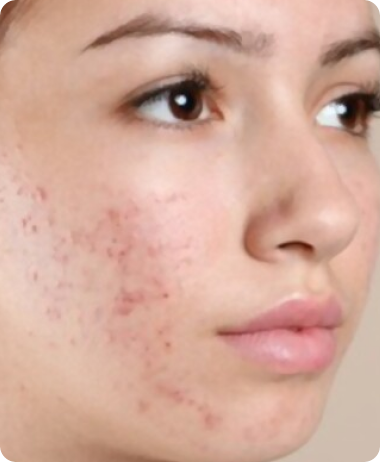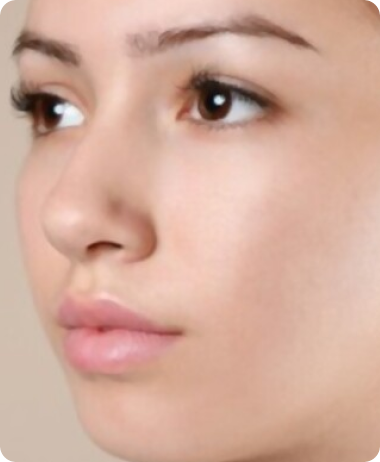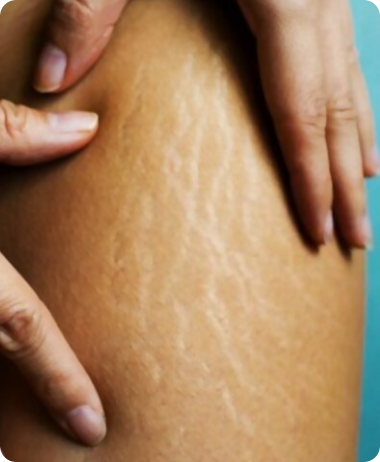Botox®

Before

After
Melasma, Pigmentation, Acne Scars is a condition that causes brown or gray patches to develop on the skin, typically on the face. The benefits of Melasma, Pigmentation, Acne Scars treatment can include:
- Improved appearance:
Melasma treatment can help to improve the overall appearance of the skin by reducing the appearance of dark patches or irregular pigmentation. - Increased self-confidence:
By improving the appearance of the skin, melasma treatment can boost a person’s self-confidence and self-esteem. - Improved skin health:
Treating pigmentation and melasma can help to improve the health of the skin, reducing the risk of future skin damage and conditions. - Enhanced skincare routine:
Treating these skin concerns often involves the use of skincare products and routines that can help to improve the overall health of the skin. - Reduced risk of skin cancer:
Treating pigmentation and melasma can help to reduce the risk of skin cancer, as these conditions are often caused by sun damage.
Melasma, Pigmentation, Acne Scars Procedure
The procedures for treating melasma, pigmentation, and acne scars will vary depending on the severity of the condition, the patient’s skin type, and other individual factors. Here are some of the common procedures used to treat these skin concerns:
- Topical treatments:
Topical creams and gels containing ingredients such as hydroquinone, retinoids, and vitamin C can be used to treat melasma and pigmentation. These products work by reducing the production of melanin in the skin, which can help to fade dark spots and even out the skin tone. - Chemical peels
Chemical peels involve the application of a chemical solution to the skin, which causes the top layers of skin to peel off, revealing smoother, more even skin underneath. This can be an effective treatment for melasma, pigmentation, and acne scars. - Microneedling:
Microneedling is a procedure that involves using a small, handheld device with tiny needles to create micro-injuries in the skin. This stimulates the production of collagen and elastin, which can help to improve the texture and appearance of the skin, including reducing the appearance of acne scars. - Laser therapy:
Laser therapy involves the use of a laser to target and break up the pigmented areas of the skin. This can be an effective treatment for melasma and pigmentation. - Combination therapy:
In some cases, a combination of different treatments may be used to achieve the best results. For example, a patient with melasma may benefit from a combination of topical treatments, chemical peels, and laser therapy.
The treatment usually takes about 30-60 minutes, and multiple sessions may be needed for optimal results.
Tattoo Removal

Before

After
The benefits of tattoo removal treatments include:
- Removes unwanted tattoos:
Tattoo removal treatments allow individuals to remove unwanted tattoos that they may regret or no longer want on their body. - Improves self-confidence:
Removing a tattoo that causes embarrassment or negative feelings can improve an individual’s self-confidence and self-esteem. - Safe and effective:
Modern tattoo removal techniques such as laser tattoo removal are safe and effective, with minimal risk of scarring or other side effects. - Customizable treatment:
Tattoo removal treatments can be customized to the individual’s specific needs, including the size, location, and color of the tattoo. - Minimal downtime:
Most tattoo removal treatments have minimal downtime, allowing individuals to return to their normal activities soon after treatment.
Tattoo Removal Procedure
There are several procedures for tattoo removal, including:
- Laser tattoo removal:
This is the most common method of tattoo removal. It involves using a laser to break up the ink particles in the skin, allowing the body to naturally absorb and eliminate the ink. Multiple sessions are usually required, and the number of sessions depends on the size, color, and complexity of the tattoo. - Intense pulsed light (IPL) therapy:
This method uses pulses of light to break up the ink particles in the skin. IPL therapy is less commonly used than laser removal, but it can be effective for certain types of tattoos. - Surgical excision:
This method involves surgically removing the tattooed skin and then suturing the wound closed. It is usually reserved for small tattoos and may result in scarring. - Dermabrasion:
This method involves using a special tool to scrape away the upper layers of skin containing the tattoo ink. It can be painful and may result in scarring. - Salabrasion:
This is an older and less common method of tattoo removal.
The treatment usually takes about 30-60 minutes, and multiple sessions may be needed for optimal results.
Stretch Marks

Before

After
Stretch marks are a common skin condition that occurs when the skin stretches rapidly, causing the collagen and elastin fibers to break, resulting in visible lines or streaks on the skin. While stretch marks are often seen as a cosmetic concern, they can also have some benefits, including:
- Signaling growth and change:
TaStretch marks often occur during times of growth, such as puberty, pregnancy, or muscle building. They can be a visible sign of changes and growth in the body, which can be a source of pride for some individuals. - Enhancing body awareness:
Stretch marks can make individuals more aware of their bodies and can help them develop a deeper understanding and appreciation of their physical changes. - Normalizing body imperfections:
Stretch marks are a common condition that affects many people. Seeing them on others or learning to accept them on oneself can help to normalize body imperfections and promote body positivity. - Increased self-esteem:
When stretch marks are a source of insecurity, treatment can help to boost self-esteem and improve body image. - Reduced itchiness:
Stretch marks can be itchy and uncomfortable, especially during pregnancy. Treatment can help to alleviate these symptoms and improve comfort.
Stretch Marks Procedure
There are several procedures that can be used to treat stretch marks, including:
- Topical creams and ointments:
Over-the-counter or prescription creams containing ingredients like retinoids, hyaluronic acid, or vitamin C can help to reduce the appearance of stretch marks by improving skin texture and elasticity. These creams are typically applied to the affected area daily. - Microdermabrasion:
This treatment involves the use of a special device that uses tiny crystals to remove the outer layer of skin, stimulating collagen production and improving the appearance of stretch marks. Multiple treatments are usually required. - Chemical peels:
Chemical peels involve applying a solution to the skin that causes the outer layer of skin to peel off, revealing smoother, more even skin underneath. Chemical peels can be effective in reducing the appearance of stretch marks, but multiple treatments may be necessary. - Laser therapy:
Laser therapy involves the use of a laser to target and break up the pigmented areas of the skin. This can be an effective treatment for melasma and pigmentation. - Radiofrequency (RF) therapy:
RF therapy uses energy waves to stimulate collagen production and improve skin texture. This treatment can be used for both old and new stretch marks.
The treatment usually takes about 30-60 minutes, and multiple sessions may be needed for optimal results.
Frequently asked questions
Deep scars often require skin surgery and resurfacing. Dermatologists use fillers to safely and effectively plump depressed acne scars. A dermatologist may fill acne scars with collagen, the patient's own fat, or another substance. Many fillers give us temporary results, which last between 6 and 18 months.
Reducing the appearance of scars and tattoos with laser treatment. Scars, unfortunately, are permanent. Lasers, however, can improve their appearance.
Like any scar, stretch marks are permanent, but treatment may make them less noticeable. Treatment can also help alleviate the itch. If you're pregnant or breastfeeding, check with your doctor before treating stretch marks.
Take charge of your health today. Schedule an appointment.
BOOK A SITTING

